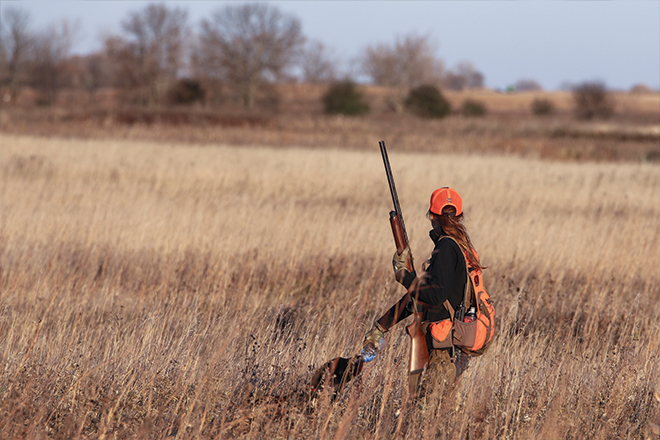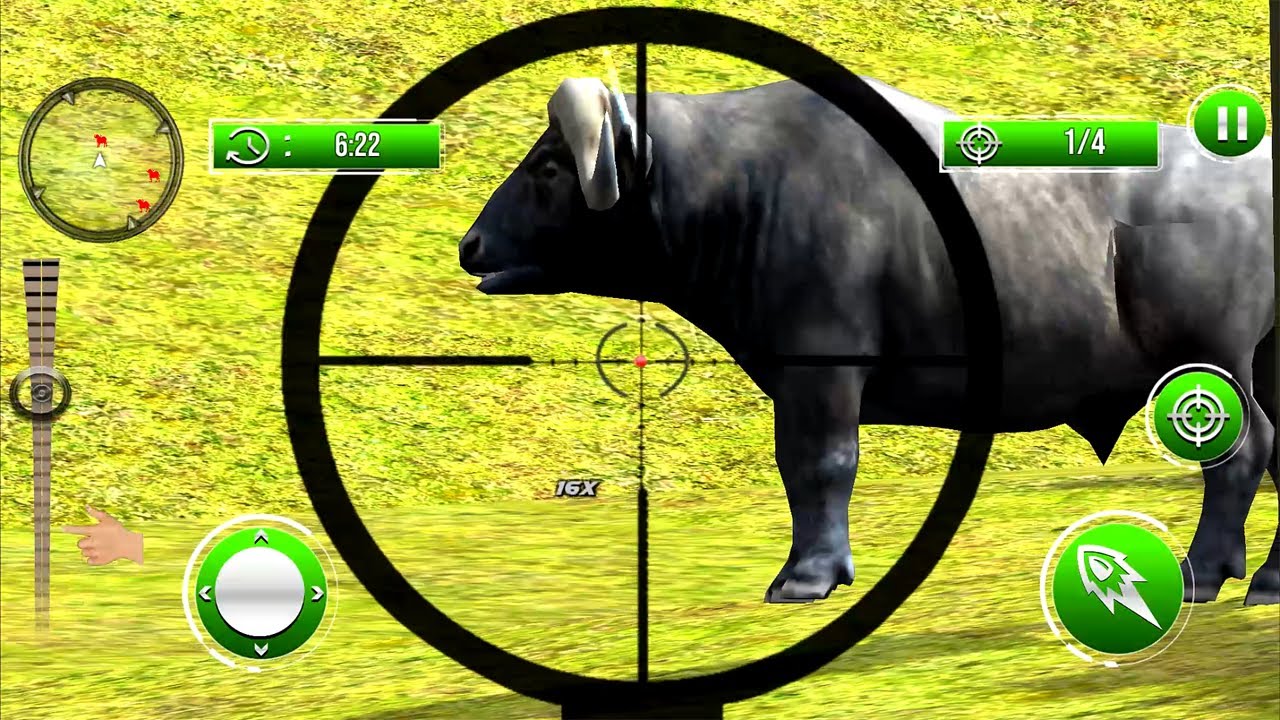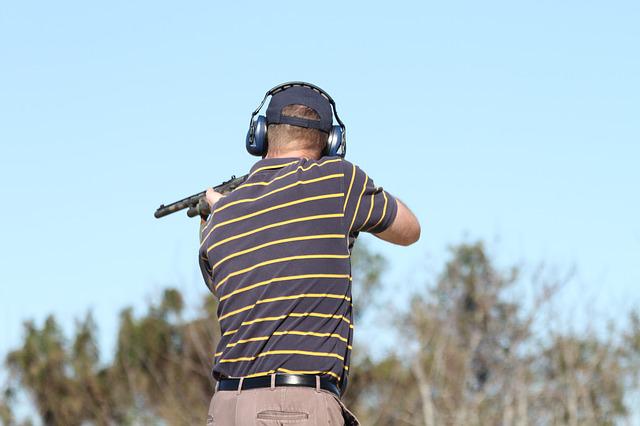
The season for dove hunting varies depending on where you live. There are some basic requirements every hunter must have. These are hunting equipment, ammunition, as well as the right technique to get a shot. Before you head out hunting, identify the dove as well as its food source. It is easiest to hunt doves in the first two days of September, so make sure you have a shotgun and a stool. It may be more difficult to hunt doves during the other two periods.
Munition to hunt doves
Doves can be hit with a number of different shot sizes and patterns, but a standard bird shot of #8 is sufficient for most hunting situations. You should use #7 1/2 shot or 8 shot if you are shooting doves from a distance of 30 yards. The #6 shot will shred the dove and is not recommended for close-range shooting. To hunt doves over longer distances, it is advisable to use a heavier weight, such as one to two pounds, in order for the pellets to be more effective.
Doves' eyesight is so incredible that they can change course and avoid the point of impact. Make sure you have cover to avoid this. It doesn't matter if it's trees or tall brush, find somewhere you can hide and wait until the birds come within range. Then, wait until they are within twenty-five to thirty yards. Then, you will be able to take the shot without having to worry about your safety. Use a retriever dog to track down and rescue the wounded dove.

Hunting doves: Techniques
If you have a few tricks, hunting doves can be very rewarding. You can set up in a weedy patch, sunflower field, or hay bale. Once you spot the doves, sit down in that spot. This will stop them from thinking of the waterhole in danger. Pass-shooting can be used to prevent you from burning a good location. Another option is to take photos from a distance in order to be able see them clearly.
First of all, doves feed in the morning. Hunters should search for doves in the areas they frequent. Doves primarily eat seeds. This includes grass, weed and other seeds. For them, the nutritious source of food is often leftover grain from farm operations. Doves are equipped with feet for perching. Therefore, you need to search them on both the soil surface and standing plants. It is important to know where you are hunting, as doves often move around to find food.
Identifying doves
It can be difficult for novice hunters to identify hunting doves. They can easily be confused and difficult to spot, especially in large cities. You can practice your hunts around the city to help you identify them. If you want to identify them, be sure to look for telltale signs. Pay close attention to their flight patterns and physical characteristics. Those who can be identified are easy.
Ideally, you'll be standing near a prominent dip in perimeter timber. Doves often travel through this dip. You can see the intruders from as far as 50 to 75 yards away. Then, stand facing that gap and try to spot any incoming birds. If you succeed, you will have a greater chance of making an incoming kill than you would otherwise. This is a critical step in identifying dove hunting areas.

Sources of food for doves
While most hunters know how to identify agricultural fields, few know how to find hidden dove hotspots. You can identify hidden dove hotspots by learning about native plants like pokie weed. There are many plants that doves love, such as barnyard grass, Johnson grass, and ragweed. Poke weed is a good example. It has purple berries as well as wild peas.
While traditional sunflower seeds are an excellent food source for doves, a more diverse food plot will draw in more species of birds. Sunflowers, for example, are a great choice for doves, but if you want to attract more species of birds, try adding grains to your food plot. Other crops such as sorghum will also attract doves. Doves love a variety crops, including winter Wheat and corn.
FAQ
How many deer hunter there are in the U.S.
It is believed that there are over 20 million deer hunter in the United States. This figure includes both professional and recreational hunters.
What are my hunting needs?
To hunt successfully, it is important to know how the animal moves, how its habits are and how to avoid getting hurt.
It is important to know the laws regarding hunting in your state. Some states allow certain types, while others prohibit hunting completely.
Weather conditions, terrain, as well as the weapon type are all important factors.
It is important to decide whether you want to hunt solo or with others when you start this hobby.
Most hunters prefer hunting with others. This is because it helps you focus on your goal. If you are by yourself, you might miss your shot.
Hunting requires a lot planning. To hunt at the best places, you will need to plan.
Prepare your weapons as well. Before you leave, clean and inspect your guns to make sure they are in good condition.
When hunting, you should always wear appropriate clothing. You should dress for the weather and terrain.
You should always have enough water and food. Also, be sure to have additional ammunition and supplies in case of emergency.
Never leave anything behind. It could get lost or damaged.
Before you start hunting, make sure you pick a safe spot that doesn't have any predators.
Follow the guidelines set forth by the government. These regulations protect wildlife as well as humans.
Which gun is the best for hunting?
A.22 caliber rifle is the best weapon for hunting. This is because it is lightweight and easy to carry around. It allows you to accurately shoot long distances.
The best time to use this type of firearm is when you are not expecting an attack from a predator.
You don’t want to waste ammunition shooting at trees, because it would do little harm. You need to have a clear shot at your prey.
A.30 caliber rifle can be used if you plan to hunt larger game such as deer and elk. However, it's heavier than a.22 caliber rifle.
You will need to practice more to achieve the same level of accuracy with a 30-caliber rifle.
Is hunting dangerous?
Yes, it is possible to get hurt while hunting.
There are many ways that you can injure someone else.
A poor shooting technique is one way. It is possible to shoot at the wrong angle and hit the wrong parts of the animal.
Another danger is being attacked or bitten by another animal.
Hunting accidents happen every day. Many people are injured or killed by their guns every year.
Hunters should not load their guns before they reach their destination.
They must also ensure their guns aren't loaded before they go into woods.
Always keep your eyes wide open. Pay attention to where you are going and listen out for any sounds.
If you are not prepared to defend yourself, do not approach animals.
Never chase after prey. Instead, wait patiently and they will come to you.
Don't take shortcuts. They could cause injury or death.
Be cautious around cliffs and other locations where it is difficult to see below.
Avoid streams and rivers. These places could flood unintentionally.
Hunting is a time to forgo alcohol. You will have a slower reaction time due to alcohol.
All safety equipment should be kept close to your body. You should always carry a first aid kit and flashlight.
It is vital to learn how to deal with an emergency. You don't need to know how to do CPR or first aid. Find someone who does.
Why is it that the U.S. Department of Agriculture (USDA), only estimates that 1% of hunters kill a deer each year?
USDA estimates that about 6 million Americans hunt deer. Only 2.2million actually shoot one.
This means that only 0.6 percent kill deer each year.
Can I bring my dog with me?
In most states, dogs cannot be hunted together. However, some states have laws allowing this practice. You can check with your state's Department of Natural Resources to see if this practice is allowed in your region.
Some hunters even bring their pets along. Some hunters believe having a pet helps them relax while hunting. Some believe having a companion makes it less likely that they will get lost.
However, it is possible to have problems with bringing your pet. Dogs are known to chase other animals away from their owners. Wild animals could also attack the pet.
Statistics
- In less than 20 years, Rhode Island saw a 40% drop in the number of hunting licenses for residents, according to The Valley Breeze. (stacker.com)
- - Percent of residents with paid hunting licenses: 0.7%- (stacker.com)
- Licenses dropped from a peak of roughly 17 million in the 1980s to 15 million in 2019, according to The Seattle Times. (stacker.com)
- - Percent of residents with paid hunting licenses: 0.7%- (stacker.com)
External Links
How To
How to choose the most desirable hunting spots in the forest
The first thing we should do when looking for good places to hunt is to know what kind of game we want to hunt. There are different types of animals and birds that live in forests and they all have their own habitat requirements, so if you don't know which type of animal you would like to hunt, you won't find any place where you can successfully catch them.
There are two main types of animals that live in the forest: large mammals or small mammals. Large mammals include deer and elk as well as moose, caribou bear, wolf, and wild hare. The smallest animals are rabbits (squirts), squirrels, hares and partridges. Each species needs its own habitat. Before you go out in the woods, it is crucial that you choose the right place. You can check your local area's flora and fauna list online to see whether there are any endangered species living near your home. It is important to ensure that there are no poachers in the area you plan on hunting a specific species.
It is important to understand how to set up equipment for hunting a particular species. It's important to use the correct equipment because it affects the success rate. You will need a gun that can accurately shoot at close range if you are hunting a rabbit. But a rifle that can easily shoot far distances is necessary if you are hunting a larger animal like a deer. You will also need bait to lure the prey. Some people suggest placing meat in a trap to attract the animal. Others prefer corn butter or peanut butter. No matter what method you use, you must adhere to the laws and regulations in the country you are hunting.
When choosing a hunting spot, you'll need to consider several factors including the weather conditions, terrain, vegetation, wildlife population, and accessibility. Safety is the main consideration when hunting. Choose a location that is safe from predators and dangerous wildlife. Avoid areas with too many people, especially during hunting seasons. Also, it is important to keep track of the seasons while hunting. This will help you figure out the best times for you to hunt.
When picking a hunting spot, you should also think about the weather. This is vital as it affects the number and species of animals that are likely to be present. Winter is when temperatures drop below zero degrees Celsius and snow covers the ground. It can be difficult to find deer, bears and wolves under the snowy layer, so it is often hard to spot them. However, if you're lucky enough to get a clear day, you might be able to spot these animals. On the other side, summer is when temperatures exceed 30 degrees Celsius and the sun warmths the earth. It is easier for animals to find shelter from the heat, as they move away from it.
Be aware of the terrain. A flat surface makes it easy to walk and run through the area, but uneven surfaces require extra effort. Steep slopes require more effort and can sometimes lead to muddy trails. So that you can navigate the area easily, try to find a spot without any obstacles.
The vegetation should be considered as well. Depending on the environment, plants vary in size and density. For smaller animals, large trees can provide shade and cover while shrubs or bushes can offer shelter. Dense vegetation will help you find large animals.
You should also be aware of the wildlife. The United States alone has over 100 million deer. They eat almost half of the food produced by crops, and they play an essential role in maintaining biodiversity. However, if the population grows too big, they could become pests and damage the ecosystem. It is therefore important to keep the population in balance.